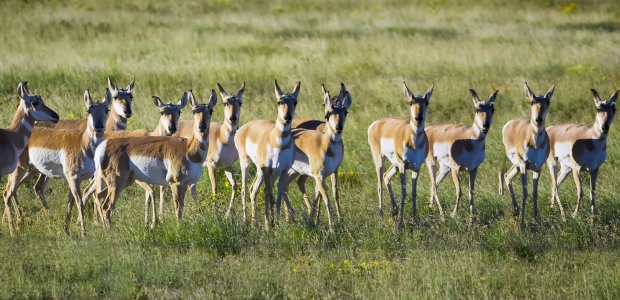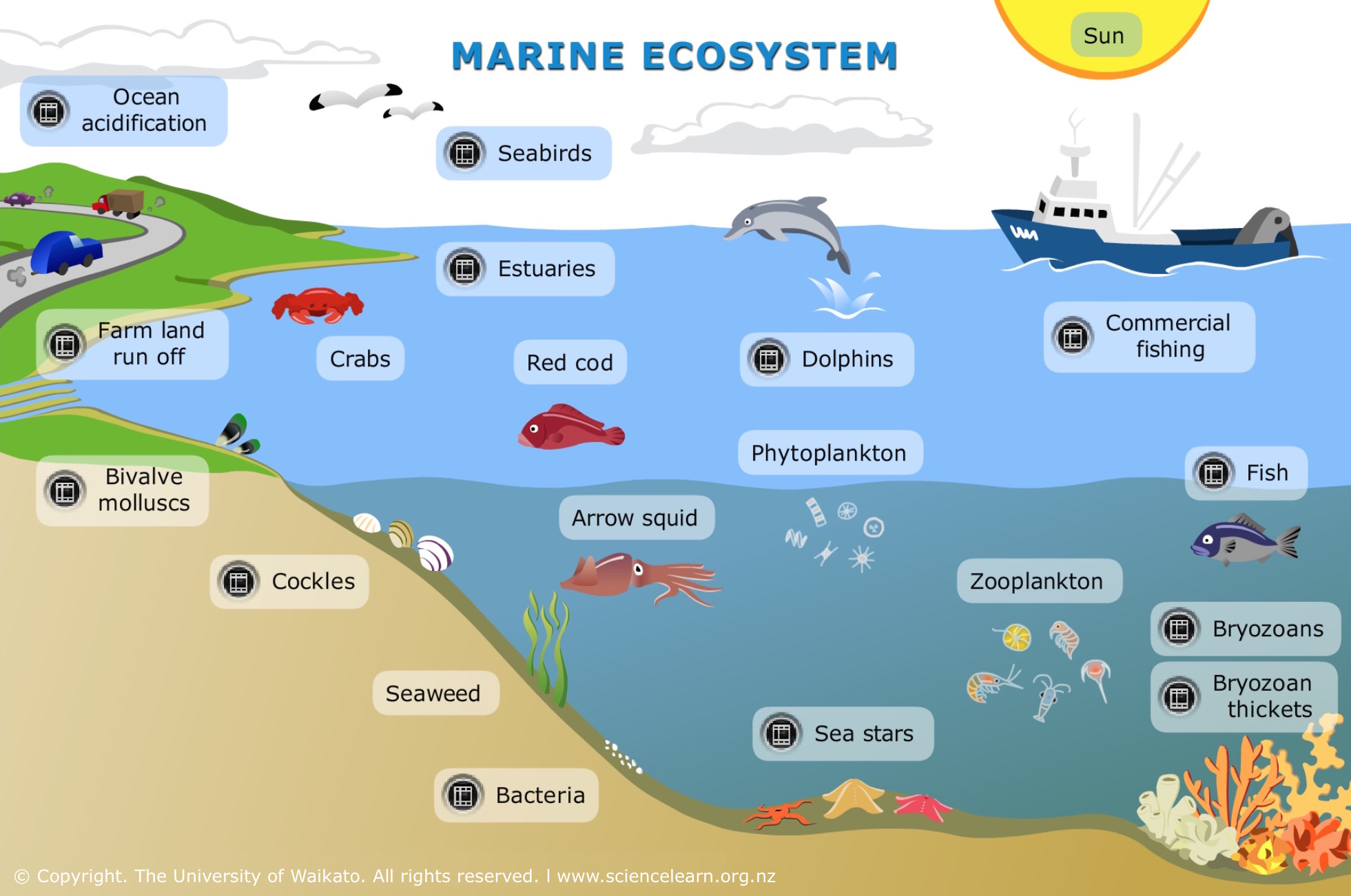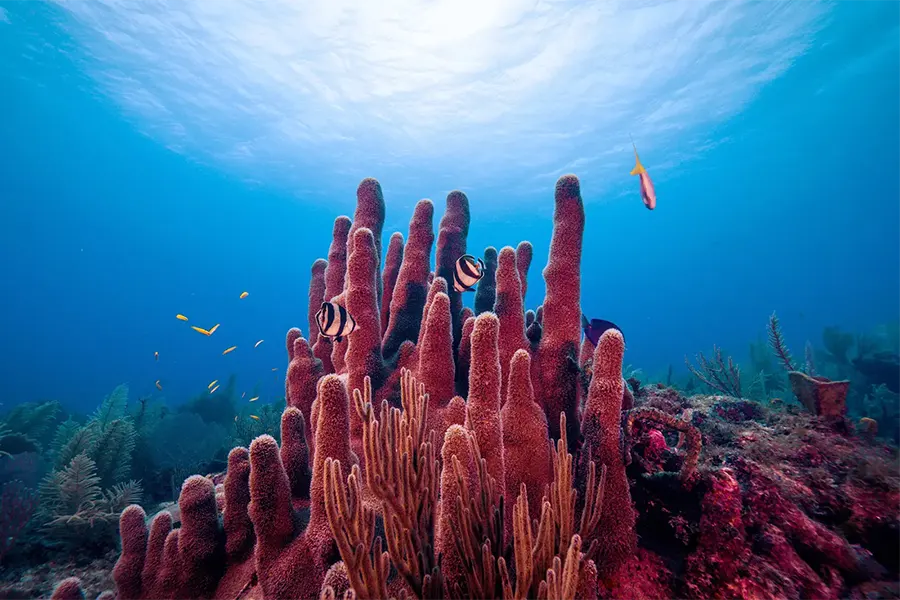Topic biodiversity of grasslands: Explore the vibrant biodiversity of grasslands, a testament to nature"s resilience and richness, offering a unique ecosystem teeming with life and ecological importance.
Table of Content
- What is the impact of increased landscape connectivity on the biodiversity of grasslands?
- Importance of Grassland Biodiversity
- Factors Influencing Grassland Biodiversity
- Types of Grasslands and Their Biodiversity
- Role of Grazing Animals in Grassland Ecosystems
- Threats to Grassland Biodiversity
- Conservation Strategies for Grassland Biodiversity
- YOUTUBE: Drivers and Patterns of Biodiversity in Grasslands: From Genomes to Multispecies Communities
- Impact of Climate Change on Grassland Biodiversity
- Grasslands as a Resource for Humans and Wildlife
- Research and Monitoring of Grassland Biodiversity
- Case Studies of Grassland Restoration and Management
What is the impact of increased landscape connectivity on the biodiversity of grasslands?
The impact of increased landscape connectivity on the biodiversity of grasslands can be significant. When grassland habitats are fragmented and isolated due to human activities such as urbanization or agricultural expansion, the biodiversity of these ecosystems can be negatively affected.
However, when landscape connectivity is enhanced, it creates corridors and linkages between different grassland areas, allowing for the movement of species and genetic exchange. This connectivity promotes dispersal of plants, animals, and microorganisms, leading to an increase in biodiversity within the grassland ecosystem.
Increased landscape connectivity benefits grassland biodiversity in several ways:
- Species Movement: By providing connected pathways, species can move more freely between different grassland patches. This movement allows for colonization of new areas, gene flow, and access to resources, contributing to the overall diversity of plants and animals.
- Habitat Expansion: Enhanced connectivity allows grassland species to expand their habitats into previously inaccessible areas, which may offer different ecological niches or better conditions for survival and reproduction. This expansion increases the overall species richness and diversity in the grassland.
- Resilience and Adaptation: Increased landscape connectivity promotes genetic exchange among populations, which enhances their ability to adapt to changing environmental conditions. This genetic diversity improves the resilience of grassland ecosystems, making them more capable of withstanding disturbances and maintaining overall biodiversity.
- Ecosystem Function: Biodiversity is essential for the functioning of ecosystems, and grasslands are no exception. Increased connectivity ensures a diverse array of species performing various ecological roles, such as pollination, seed dispersal, nutrient cycling, and pest control, which are crucial for maintaining a healthy and balanced grassland ecosystem.
Overall, increased landscape connectivity plays a crucial role in preserving and enhancing the biodiversity of grasslands. By allowing for the movement of species, expanding habitats, promoting resilience, and maintaining ecosystem function, it contributes to the long-term conservation and sustainability of these valuable ecosystems.
READ MORE:
Importance of Grassland Biodiversity
Grassland ecosystems are vital for their biological diversity, supporting a wide array of plant, animal, and microbial life. These ecosystems play crucial roles in:
- Carbon Storage: Grasslands act as significant carbon sinks, helping to mitigate climate change by storing carbon in their soil and vegetation.
- Soil Conservation: The root systems of grassland plants prevent soil erosion, maintain soil health, and promote water retention.
- Supporting Wildlife: Grasslands provide habitat, food, and breeding grounds for numerous species, including endangered and keystone species.
- Sustaining Livelihoods: Many communities worldwide depend on grasslands for grazing, agriculture, and cultural practices.
- Biodiversity Hotspots: Grasslands are rich in biodiversity, hosting unique species adapted to these environments, contributing to global biodiversity.
- Pollination and Seed Dispersion: Grasslands support a variety of pollinators and seed-dispersing species, essential for the reproduction of many plants.
Conserving grassland biodiversity ensures the resilience of these ecosystems to environmental changes, secures food sources, and maintains ecological balance.

Factors Influencing Grassland Biodiversity
The biodiversity of grasslands is shaped by a variety of factors, each playing a significant role in the composition, richness, and health of these ecosystems:
- Climate: Temperature and precipitation patterns determine the types of species that can thrive in grasslands, influencing their diversity.
- Soil Type: Soil characteristics, including fertility and texture, affect the variety of plant species, which in turn influences animal diversity.
- Grazing Pressure: Both wild and domesticated grazing animals can shape grassland biodiversity through their feeding habits, impacting plant composition and structure.
- Fire Regimes: Natural and human-managed fires can maintain grassland ecosystems by preventing the encroachment of woody plants and promoting species diversity.
- Human Activities: Land use changes, agriculture, urbanization, and pollution significantly impact grassland biodiversity, often leading to habitat loss and fragmentation.
- Invasive Species: The introduction of non-native species can disrupt native ecosystems, outcompeting local flora and fauna and reducing biodiversity.
- Conservation Efforts: Protective measures and restoration projects can help preserve and enhance biodiversity in grassland areas.
Understanding these factors is crucial for the effective management and conservation of grassland biodiversity, ensuring these ecosystems continue to thrive.
Types of Grasslands and Their Biodiversity
Grasslands, diverse in their geographical distribution and ecological functions, are classified into several types, each hosting a unique array of biodiversity:
- Tropical Grasslands (Savannas): Characterized by a warm climate and seasonal rainfall, savannas support a wide range of grasses, shrubs, and trees, as well as large herbivores and predators.
- Temperate Grasslands: Found in regions with moderate to low rainfall, these grasslands have rich soil, supporting a variety of grasses and flowers, and are home to many birds, insects, and mammals.
- Flooded Grasslands: These wetlands are often found near rivers or lakes, providing habitat for waterfowl, fish, and aquatic plants, contributing to high levels of biodiversity.
- Montane Grasslands: Located at high elevations, these grasslands offer unique climate conditions that support a diverse range of flora and fauna adapted to cooler temperatures.
- Desert Grasslands: Despite arid conditions, these areas harbor species that are highly adapted to dry environments, including drought-resistant plants and animals specialized in conserving water.
Each type of grassland plays a crucial role in maintaining ecological balance, supporting species diversity, and offering various ecosystem services, from carbon sequestration to water filtration.

Role of Grazing Animals in Grassland Ecosystems
Grazing animals play a pivotal role in maintaining the health and biodiversity of grassland ecosystems through their interactions with the environment:
- Nutrient Cycling: Grazers facilitate nutrient cycling by consuming plant material and returning nutrients to the soil through their waste, promoting healthy plant growth.
- Seed Dispersal: Many grassland plants rely on animals to disperse their seeds, ensuring plant diversity and the continuation of various species.
- Vegetation Control: Grazing helps to maintain grassland habitats by preventing the dominance of any single species, thus supporting a diverse plant community.
- Habitat Creation: The activities of grazing animals, such as trampling, can create microhabitats for other organisms, increasing biodiversity.
- Predator-Prey Dynamics: Grazers are a key food source for predators, playing a crucial role in the food web and helping to maintain the balance of grassland ecosystems.
Their presence and activities help to shape ecosystem structure, influence the distribution of plants and animals, and contribute to the overall functionality of grasslands.
Threats to Grassland Biodiversity
Grassland ecosystems face several threats that can significantly impact their biodiversity, health, and ecological services:
- Habitat Loss and Fragmentation: Expansion of agriculture, urban development, and infrastructure projects lead to the loss of grassland habitats, reducing space for native species.
- Overgrazing: Excessive grazing by domestic livestock can degrade vegetation, soil quality, and water resources, leading to loss of species.
- Invasive Species: Non-native plants and animals can outcompete indigenous species for resources, altering the ecological balance of grasslands.
- Climate Change: Changes in temperature and precipitation patterns affect plant growth cycles, water availability, and species distribution in grassland areas.
- Pollution: Pesticides, fertilizers, and other chemicals can contaminate soil and water, harming wildlife and plant species.
- Fire Suppression: Preventing natural fires can lead to the accumulation of woody plants, changing the grassland landscape and reducing biodiversity.
Addressing these threats requires coordinated conservation efforts, sustainable management practices, and global awareness to preserve grassland ecosystems for future generations.

Conservation Strategies for Grassland Biodiversity
Effective conservation of grassland biodiversity is essential to preserve these vital ecosystems for future generations. Several strategies can be employed:
- Protected Areas: Establishing and managing protected areas to conserve critical grassland habitats and their unique flora and fauna.
- Sustainable Grazing: Implementing grazing management plans that balance the needs of livestock with the preservation of native plant species and soil health.
- Restoration Projects: Restoring degraded grasslands through reseeding native plants, controlling invasive species, and rehabilitating soils.
- Climate Change Mitigation: Adopting practices that reduce greenhouse gas emissions and increase carbon sequestration in grasslands.
- Community Involvement: Engaging local communities in conservation efforts, providing education and incentives for sustainable land use practices.
- Research and Monitoring: Conducting ongoing research and monitoring to understand grassland ecosystems better and the impacts of conservation actions.
- Policy and Legislation: Developing and enforcing laws and policies that protect grassland ecosystems from unsustainable development and exploitation.
By employing these strategies, we can ensure the protection of grassland biodiversity, securing the ecological services they provide for all forms of life.
Drivers and Patterns of Biodiversity in Grasslands: From Genomes to Multispecies Communities
\"Unlock the secrets of our genetic blueprint with this captivating video on genomes! Explore the extraordinary complexity and diversity of life encoded in our DNA, and embark on a journey of discovery that will leave you in awe of nature\'s wonders.\"
Rebuilding an Ecosystem in America\'s Grasslands: 60 Minutes
\"Dive into the mesmerizing world of ecosystems through this visually stunning video. Immerse yourself in the intricate balance of plants, animals, and their environment, and witness the interconnectedness that sustains life on our beautiful planet.\"
Impact of Climate Change on Grassland Biodiversity
Climate change poses significant threats to the biodiversity of grassland ecosystems through various mechanisms:
- Altered Weather Patterns: Changes in precipitation and temperature can shift the distribution of plant and animal species, potentially leading to mismatches in ecological interactions.
- Increased Droughts: More frequent and severe droughts can stress grassland ecosystems, reducing plant growth and water availability for wildlife.
- Enhanced Pest Outbreaks: Warmer temperatures may favor the proliferation of pests and diseases, negatively affecting native species and crop yields.
- Shifts in Plant Communities: Climate change can lead to the encroachment of woody plants into grasslands, altering habitat structures and reducing space for native grasses and herbs.
- Wildfire Frequency: Increased temperatures and dry conditions can lead to more frequent and intense wildfires, further degrading grassland habitats.
- Changing Migration Patterns: Wildlife that depends on grassland ecosystems may shift their migration patterns in response to climate changes, affecting breeding and feeding grounds.
Addressing the impact of climate change on grassland biodiversity requires global cooperation, adaptive management strategies, and mitigation efforts to ensure the resilience of these ecosystems.

Grasslands as a Resource for Humans and Wildlife
Grasslands serve as invaluable resources for both humans and wildlife, offering a multitude of benefits and ecosystem services:
- Food Production: Grasslands provide pasture for livestock, which is a fundamental resource for meat, milk, and other dairy products.
- Biodiversity Hotspots: They support a wide range of plant and animal species, contributing significantly to global biodiversity.
- Carbon Sequestration: Grasslands play a critical role in capturing carbon dioxide from the atmosphere, helping to mitigate climate change.
- Water Regulation: These ecosystems help regulate water cycles, filtering and storing water, thus ensuring clean water supplies.
- Cultural and Recreational Values: Grasslands offer recreational opportunities and hold cultural significance for many communities around the world.
- Medicinal Resources: Many plants found in grasslands have medicinal properties and are used in traditional and modern medicine.
- Habitat for Wildlife: Grasslands provide essential habitats for numerous species, including many that are threatened or endangered.
Conserving grasslands is crucial for maintaining these benefits, requiring sustainable management practices to ensure they continue to support human and wildlife populations well into the future.
Research and Monitoring of Grassland Biodiversity
Research and monitoring are critical components in understanding and preserving the biodiversity of grassland ecosystems:
- Species Inventory: Conducting thorough inventories of plant and animal species to establish baselines for biodiversity and track changes over time.
- Ecosystem Health Assessments: Evaluating the health and functioning of grassland ecosystems to identify trends, threats, and conservation priorities.
- Impact Studies: Investigating the effects of human activities, climate change, and other environmental factors on grassland biodiversity.
- Restoration Research: Developing and testing methods for restoring degraded grasslands and enhancing biodiversity.
- Long-term Monitoring Programs: Implementing long-term monitoring to understand ecological dynamics, species responses to environmental changes, and the effectiveness of conservation strategies.
- Collaborative Projects: Engaging in collaborative research projects with local communities, governments, and international organizations to share knowledge and resources.
- Data Sharing and Public Engagement: Promoting the sharing of research findings and engaging the public and policymakers to raise awareness about the importance of grassland conservation.
Through dedicated research and monitoring efforts, we can gain insights necessary to protect grassland biodiversity and ensure these ecosystems remain vibrant for generations to come.

READ MORE:
Case Studies of Grassland Restoration and Management
Grassland restoration and management practices around the world offer valuable insights into the successful conservation of these ecosystems:
- The Great Plains of North America: Initiatives here focus on holistic management practices, integrating livestock grazing with wildfire management to enhance biodiversity and soil health.
- The Serengeti in Africa: This iconic ecosystem is the subject of ongoing research and conservation efforts, balancing the needs of wildlife, local communities, and tourism.
- The Pampas of South America: Restoration projects in these vast grasslands include reseeding native grasses and controlling invasive species to restore ecological balance.
- The Steppes of Central Asia: Conservationists are working to protect these critical habitats from overgrazing and desertification through sustainable land use practices.
- The New Forest in the UK: This historic grassland area is managed through controlled grazing, habitat restoration, and community engagement to preserve its unique biodiversity.
These case studies demonstrate the importance of adaptive management, community involvement, and research in restoring and maintaining the health and biodiversity of grassland ecosystems.
Embracing the richness of grassland biodiversity is essential for our planet. By understanding and protecting these vital ecosystems, we secure a healthier, more resilient future for all species, including humans.














